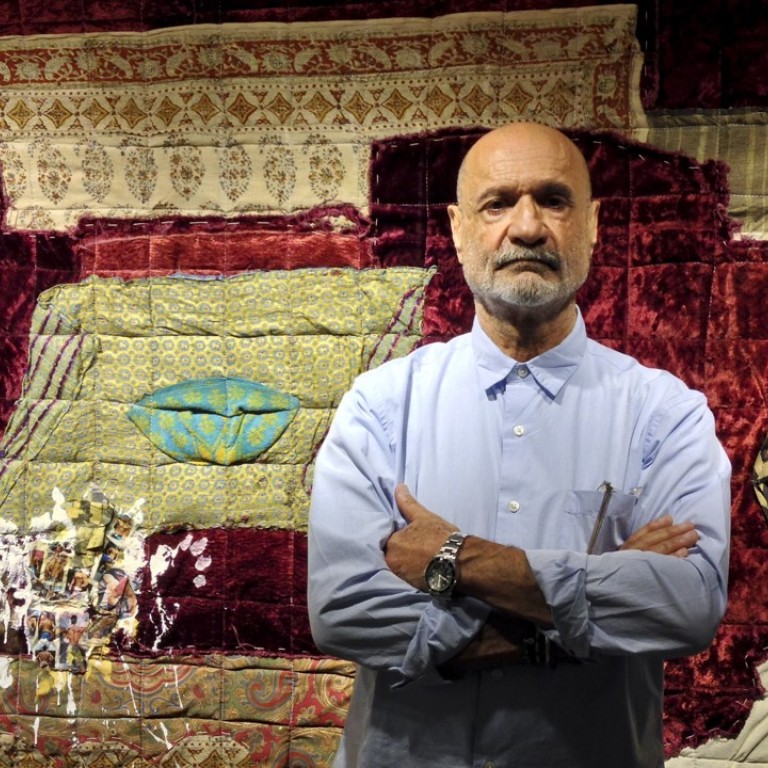
Three Hong Kong art exhibitions not to miss this summer
Photography, white porcelain sculptures and quilts with a message by international artists Taryn Simon, Rachel Kneebone and Fereydoun Ave are featured in their first solo shows at Gagosian, White Cube and Rossi & Rossi galleries
Hong Kong’s commercial galleries have gone into hyperactivity, with one opening after another to catch visitors before the summer exodus begins. Don’t know where to start? Here are three must-see shows by major international artists who have never had solo exhibitions in this city before.
Taryn Simon: Portraits and Surrogates
Gagosian Gallery
American Taryn Simon catalogues situations where the individual gets caught up in the power of the state, war, religion, capitalism and other overarching systems they have little control over, which means anyone, anywhere, can be her subject.
Indeed, the mini retrospective at the Gagosian Gallery covers a bewildering range: from the most mundane – a record of confiscated items at Kennedy International Airport – to the shocking – a project about albinos in Tanzania killed for their body parts because witch doctors insist they bring luck.

The latter is part of the series called A Living Man Declared Dead and Other Chapters I – XVIII. Simon spent four years from 2008-2011 travelling around the world researching and recording families who have lost members to cruel superstition, to civil war, or in the case of feral rabbits in Australia, to biological warfare designed to wipe them out. Each panel has a photographic family tree with gaps representing the dead and the missing. The unsmiling faces of the three generations she photographed are as blank as the uniform, beige background. Textual explanations on the other side provide the context.
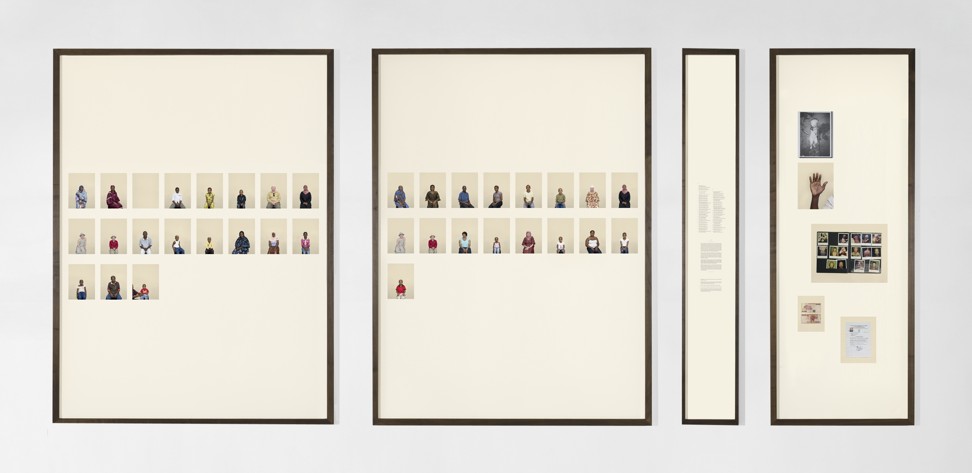
This clinical presentation is provocative. By parodying the photographic records of, say, Victorian eugenicists and taxonomists, she insists on presenting her findings in an unsentimental way.
She adopts the same dispassionate gaze for Contraband (2010), a police line-up of more than a thousand items seized at the New York airport.

It was an exercise similar to Dutch artist Christien Meindertsma’s Checked Baggage (2003) but there is one major difference. Whereas Meindertsma found a relatively straightforward way to purchase the confiscated objects from Amsterdam’s Schiphol Airport, Simon patiently negotiated with bureaucrats to gain access to the customs and border protection federal inspection site and the international mail facility at New York airport. Then, during five basically sleepless days she documented the 24/7 operation.
Her modus operandi reveals a hidden passion beneath the cold erasure of emotion from the photographs. Simon said at the opening of her Hong Kong exhibition that getting access for her projects was often a test of endurance, and her battles with red tape should be thought of as performance art and an important component of her work.
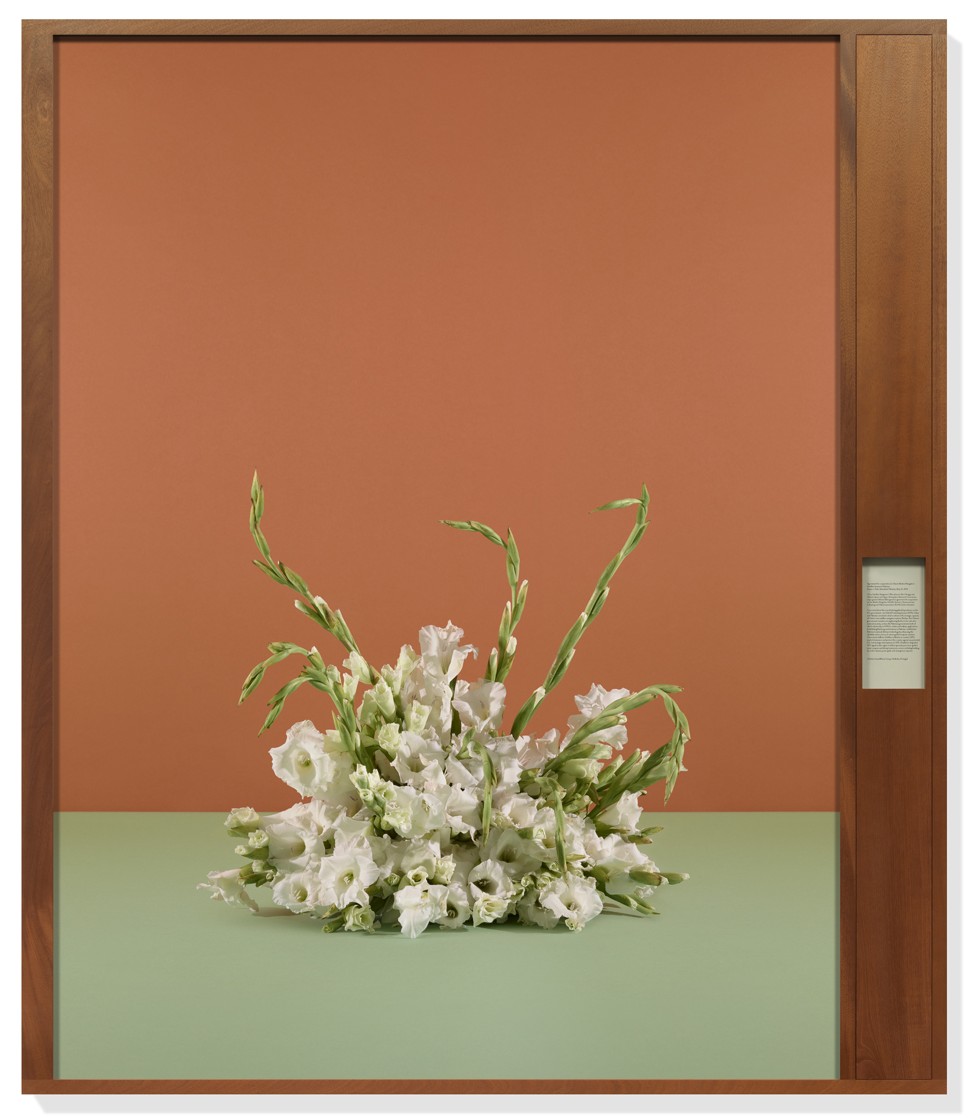
Her Paperwork and the Will of Capital (2016) series required research rather than battles with bureaucracy. She studied photographs of major international treaties being signed, and reproduced the floral centrepieces that are always a kind of silent witness to the proceedings.
The exercise is reminiscent of Kapwani Kiwanga’s Flowers for Africa (2014), a project recreating the floral arrangements at the declarations of independence for African countries, except Simon’s focus on the flowers is a commentary on capitalism and an anti-authority gesture.
You may not be convinced by the intellectual contortions but her work certainly raises interesting questions about the role of the artist.
Taryn Simon: Portraits and Surrogates, Gagosian Gallery, 7/F Pedder Building, 12 Pedder Street, Central, Tue-Sat 11am-7pm. Until Aug 5.
Rachel Kneebone: Ovid in Exile
White Cube
British artist Rachel Kneebone destabilises power with the most unlikely of materials: white porcelain. Her colossal 399 Days (2012-13), a five-metre high tower of cavorting, writhing limbs, fluttering petals and semi-concealed nubs is standing in its full subversive exuberance amid the historic white marble sculptures at the Victoria & Albert Museum.
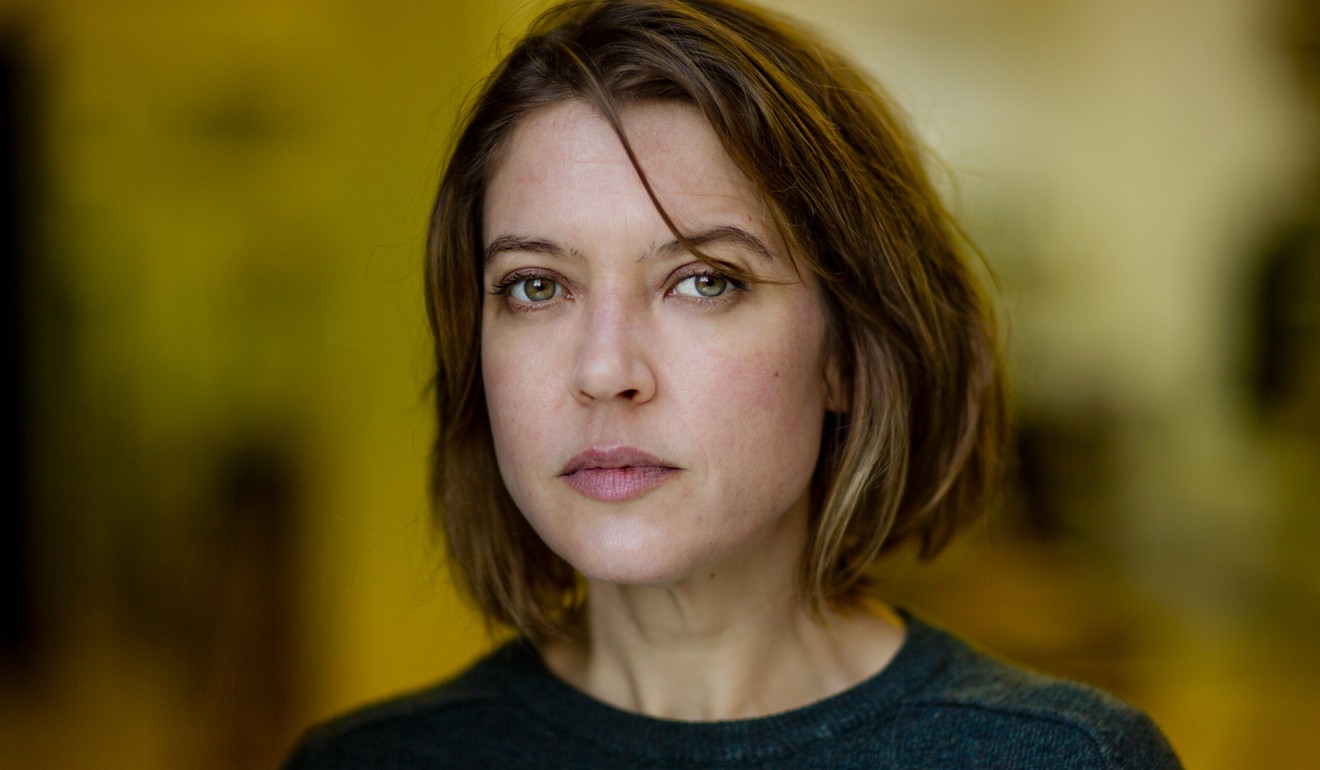
Kneebone said on a recent visit to Hong Kong it took 399 days to complete her largest work to date and that it was about absolutely nothing. But against the cast of the Roman Trajan’s Column at the London museum, her hollow and divided column is a wicked rejoinder to the permanent collection of imperious, static emblems of authority.
Kneebone describes a world that is ever changing and unpredictable. Legs feature as a symbol of constant movement. Cracks and imperfections are allowed as a concession to how, as creator, she cannot have total control over reactions in the kiln.
“Ovid in Exile” at White Cube features nine sculptures based on the stories of the lustful, shape-shifting gods and nymphs in the Roman poet’s Metamorphoses.
The titular Ovid in Exile (2016) is everything the mythological tales are: the liberating and destructive power of desire, death, transformation and rebirth, the fluidity of identity. Exquisitely shaped, unsettlingly dismembered legs flail about in ecstasy, toes curled and entwined in vine and flowers on top of a cracked, sarcophagus-shaped base.
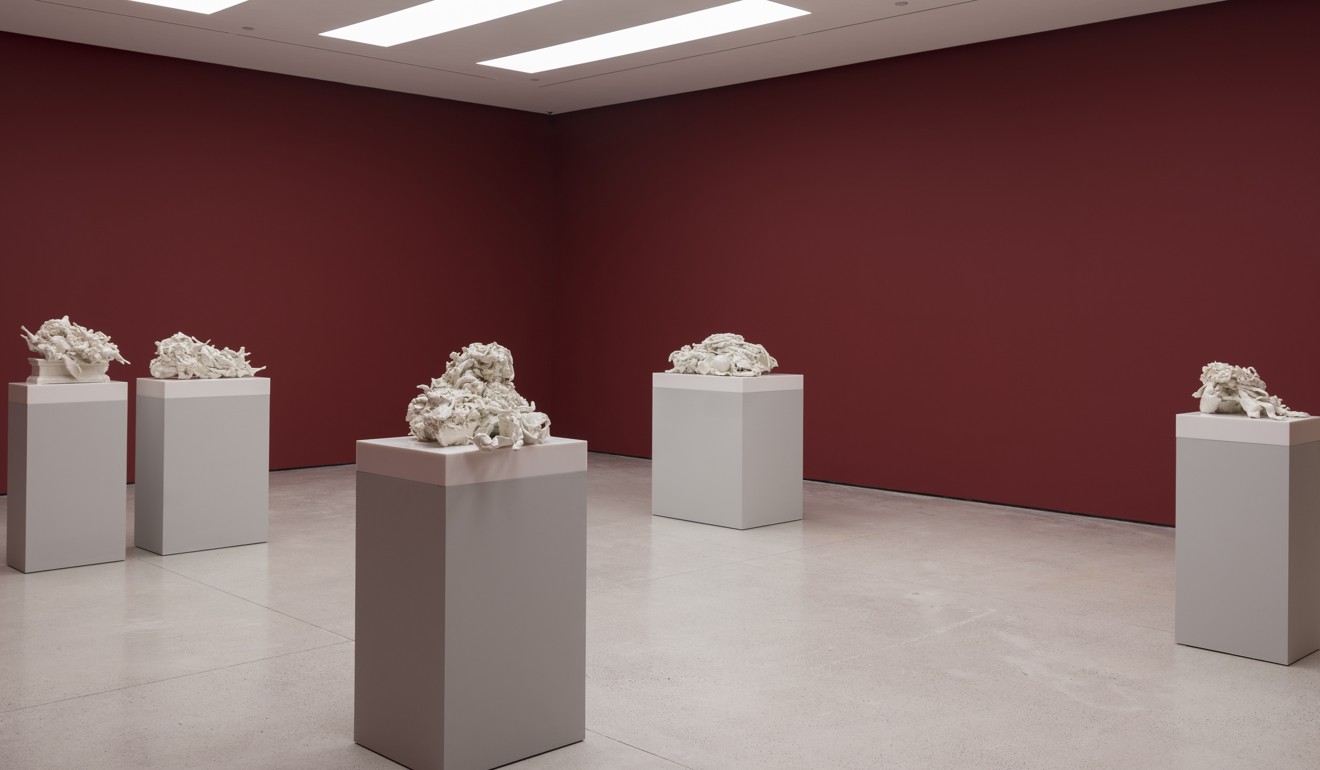
Daphne (2015) is all motion, with entangled torsos and legs thrusting skyward like the leaves of the laurel tree that the naiad was transformed into. And Salmacis (2016) is made with two halves, just as the nymph was merged with Hermaphroditus to become a half-woman, half-man god.
The exhibition is accompanied by drafts that shed some light on how she composed the sensual, intricate, dancing limbs.
Rachel Kneebone: Ovid in Exile, White Cube, G/F 50 Connaught Road Central, Central, Tue-Sat, 11am-7pm. Until Aug 19.
Fereydoun Ave: Shah Abbas and his Page Boy
Rossi & Rossi
Iranian artist Fereydoun Ave started his Rostam series soon after his home country became an Islamic republic in 1979. As a Zoroastrian, he was seeking a national identity outside of Islam that he and other religious minorities could relate to, and the tragic hero from the Persian Book of Kings became his muse.

A newspaper photograph of a modern Iranian wrestling champion represents Rostam in the series of collages, which Ave is revisiting in recent years. The beefy hero is often seen in emasculating situations – running away from hyenas and vultures (as symbols of death), for example – or against the theme of the four seasons.
“The macho” has gone past its summer peak and gone to seed, as Ave attributes the subjugation of women after the 1979 revolution to fear.
The Rostam section sets a subversive tone for the main body of the exhibition, which on first sight may seem like a collection of quilts. Instead, it is an angry, and achingly personal creation. Ave has covered traditional quilts with found images of bare-chested men, plus splashes of paint and fabric he has collected or inherited from his mother and grandmother.
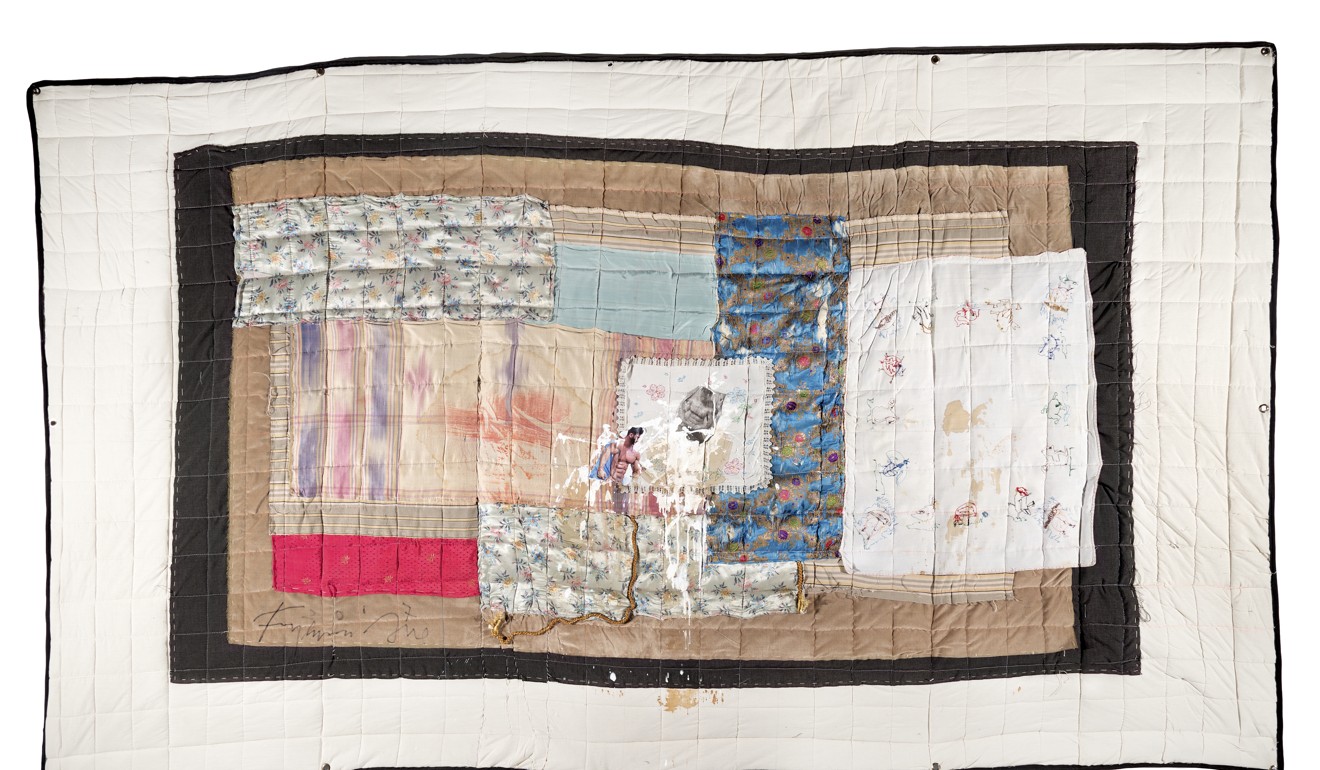
The quilts were bought in Tehran’s bazaars and are of a kind found in many Iranian households. “Above the blankets, you see a happy, warm family. What happens under the blankets, you never talk about,” he said.
The title of the exhibition, “Shah Abbas and his Page Boy”, refers to a 17th century painting which showed the much-feared Shah Abbas I in a tender moment with a young cup-bearer, and refers to the artist’s borrowing of Persian tradition to tell of forgotten stories and suppressed desires and identities in modern Iranian society.
The splashes of paint are sexual and bloody, a nod to Ave’s formative friendship with Cy Twombly, with whom he once shared a studio.
Fereydoun Ave: Shah Abbas and his Page Boy, Rossi & Rossi, 3C Yally Industrial Building, 6 Yip Fat Street, Wong Chuk Hang, Tue-Sat, 11am-6pm. Until Jul 29.

